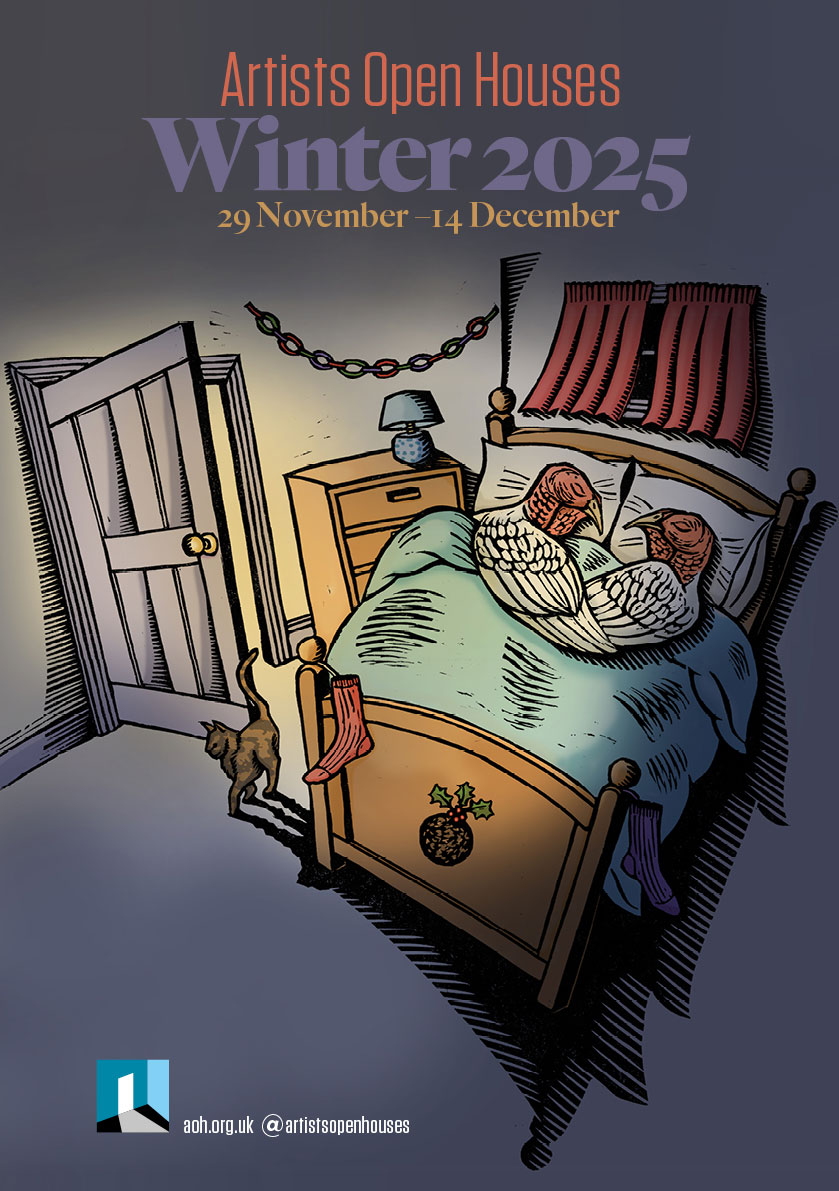Matt Henry tell us about Southern Gothic, 60s innocence and dreams of an exploding watch…

Matt Henry: Phone call
Hi Matt, Your photographs are compelling because we’re not quite sure what we’re seeing. They are like stills from films that never existed; can you tell us how you came to work in this way?
I began life as a magazine journalist with novelist ambitions. I’d always been a big reader of fiction as a child and young adult. But I quickly became hooked on photography after playing in my mother’s darkroom and found it frustrating that there was no real precedent for telling stories with photographs. It’s a medium that’s steeped very much in the documentary real. The closest I could get at the time was in fashion, as they laid out their editorial spreads in story form. But I didn’t like that world and found it formulaic and constraining. So in 2007 I began my journey of approaching photography like you might a short film; thinking about character and manufacturing a story as I saw fit, with no real model existing or market for it. It was a shot in the dark really.
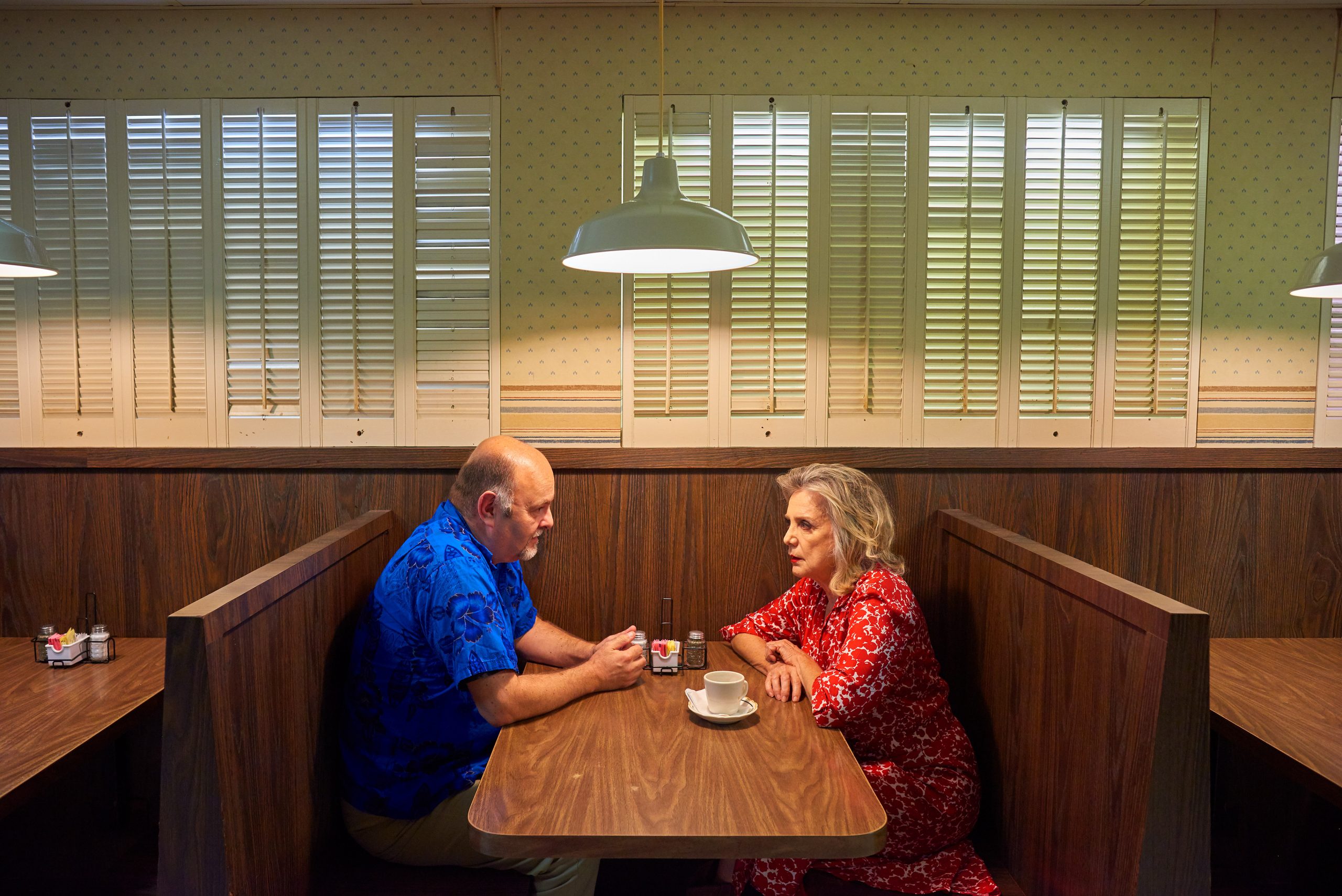 Matt Henry: A Key to the Basement
Matt Henry: A Key to the Basement
American Southern Gothic is a major influence for you, can you explain a bit about this and the ways in which it shapes your work?
I studied Politics at A-Level and University and American politics was a big part of this. I find the dissonance of America horrifying and fascinating at the same time. On the one hand there’s the pioneer spirit and spectacular landscape, and on the other the history of slavery, racial segregation and its implication that the American Dream is really only for a certain kind of people. The American South really encapsulates all of this, and Southern Gothic literature emerged from this. It fuses the dark romanticism that can be found in its landscapes and architecture with a critique of the racism, violence and religious extremism characteristic of this area. All stories ultimately must have conflict to drive them forward, so as a storytelling genre, it’s particularly rich. If there’s a film maker in America that can capture the beauty and the tragedy of America, it’s David Lynch. Although his genre isn’t Southern Gothic, his work really exemplifies why the Southern Gothic genre would appeal.

Why did you choose the 60s as a period in which to set the photographs?
It’s really hard to get at this as I think it’s something that’s quite unconscious, but certainly as a student of politics the utopian spirit of the era is a real draw. People really believed that they could change the world, and in a large part they did. At the time everything was to play for in lots of ways. The doors were wide open for change, which is quite a contrast with the cynicism of our era. They were beautifully naïve and, in a way, that naivety was a very powerful force for change.
It’s also close enough to us that we can still see ourselves in there. Yes, it’s pre-internet but there’s still so much that’s analogous. To me that time distance allows us to better look at ourselves than does the present day. We’re too close to the now to be able to make really accurate judgements about what is taking shape; and the speed of change now is comparably fast, if not faster. The 60s means different things to different people, but to me it’s really represents play, and openness, and journeys. I love the unabashed hope of it all. Of course there was a thread running very much counter to that at the time, but that’s very interesting too.
 Matt Henry: The Trip No.14
Matt Henry: The Trip No.14
There is a feeling of suspension and uncanniness in your photographs – we don’t know what is going to happen next. Can you tell us how you achieve this feeling?
I’m not sure that’s conscious and more of a manifestation of my own dis-ease in the world. But certainly, if you’re telling stories with photographs, you can’t present a resolved scenario and expect people to be engaged. People like to work and to think and by presenting a before or an after, it allows them this room, like a puzzle. This is something that photography affords. Film can twist and turn but ultimately it must resolve a series of plot points as it moves forward. If you’re picking story moments to show with photographs, it’s better to show the journey parts and not the resolution parts, as where’s the fun in that? What I’m asking people to do is to make their own film; to fill in the blanks.
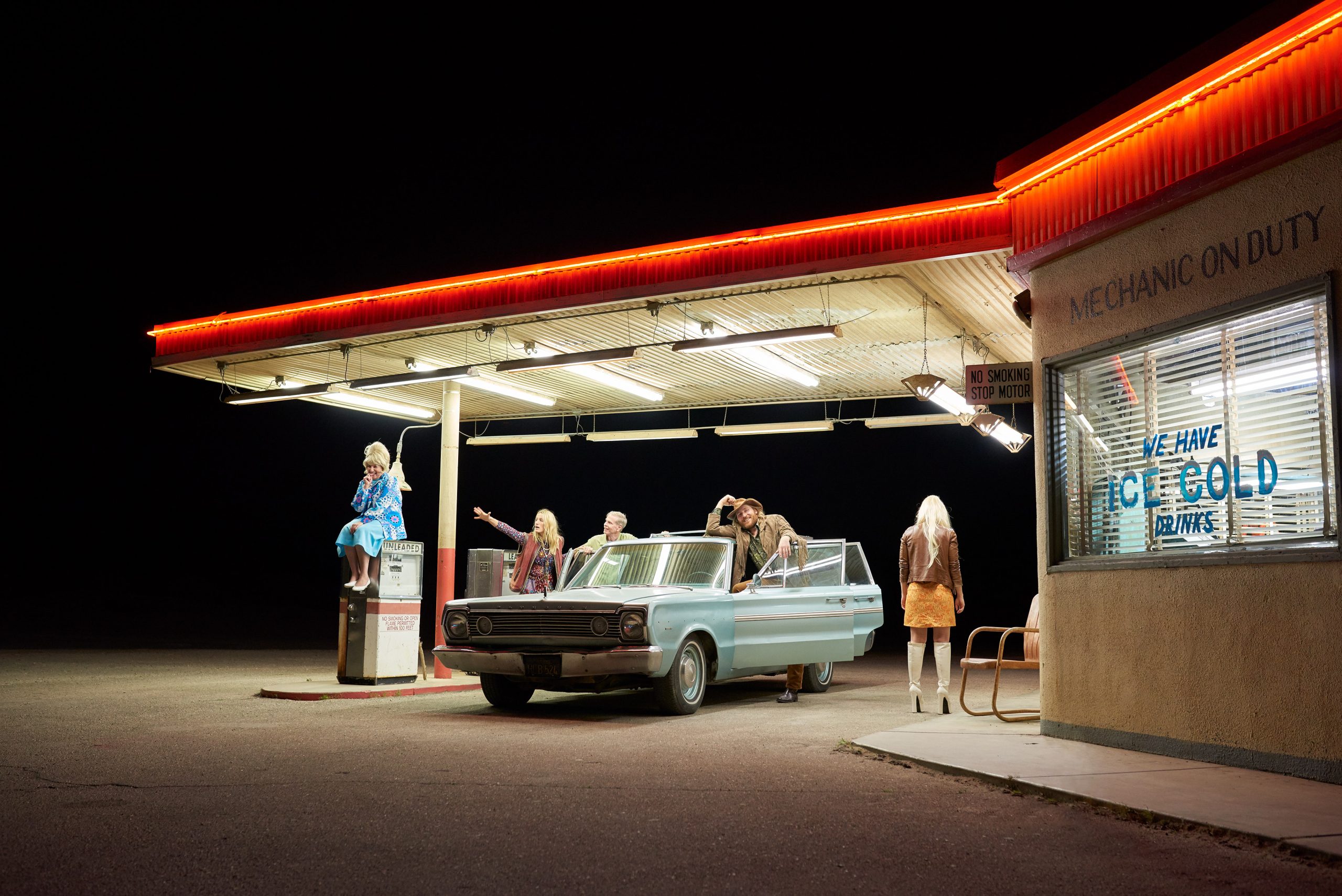 Matt Henry: The Trip No.19
Matt Henry: The Trip No.19
What writers and film makers have influenced your work?
It’s more film makers these days, and number one is David Lynch. No one better accesses the uncanniness of dream states. He really takes me somewhere else, and my dreams are usually much more entertaining than real life. I dreamt last night that my watch jumped off my wrist and exploded, the parts began to scatter around the room, just as time began to go backwards. It felt like it was moving forwards, but we went from 5pm to 1pm as we chatted in the pub. And my dad called me to tell me that North was now reading South, and South was reading North. You just don’t get that level of interesting stuff in the day-to-day world!
Early Jim Jarmusch as well; Stranger than Paradise and Down by Law are two of my favourite films of all time. And then as you’d expect the Coen Brothers, Wes Anderson, Stanley Kubrick, David Cronenberg, Alfred Hitchcock. And lots of directors for particular films, like Andrei Tarkovsky, Ridley Scott, Ingmar Bergman, Quentin Tarantino, Sidney Lumet, Brian De Palma, Terrence Malick, Francis Ford Coppola. There are so many, many great talents out there that we’ve been so lucky to have.
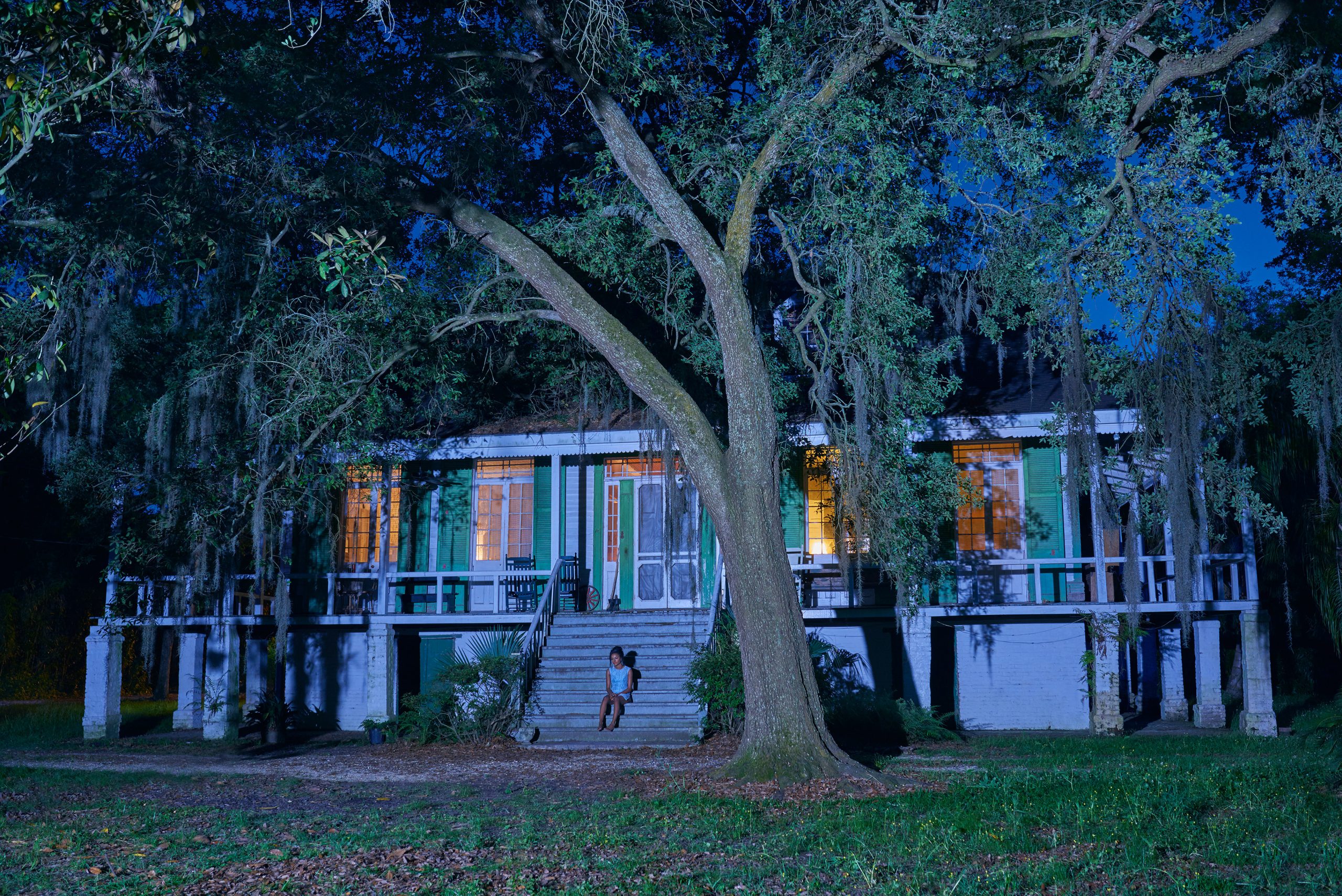 Matt Henry: The Plantation House
Matt Henry: The Plantation House
Do you feel the American South today still represents those same qualities of strangeness and difference?
I was shooting in East Texas, Louisiana and Georgia so can’t speak for the whole South but strange it certainly is, and divided it certainly still is. They’re places that still get under your skin somehow. There’s something going on there that is hard to put into words.
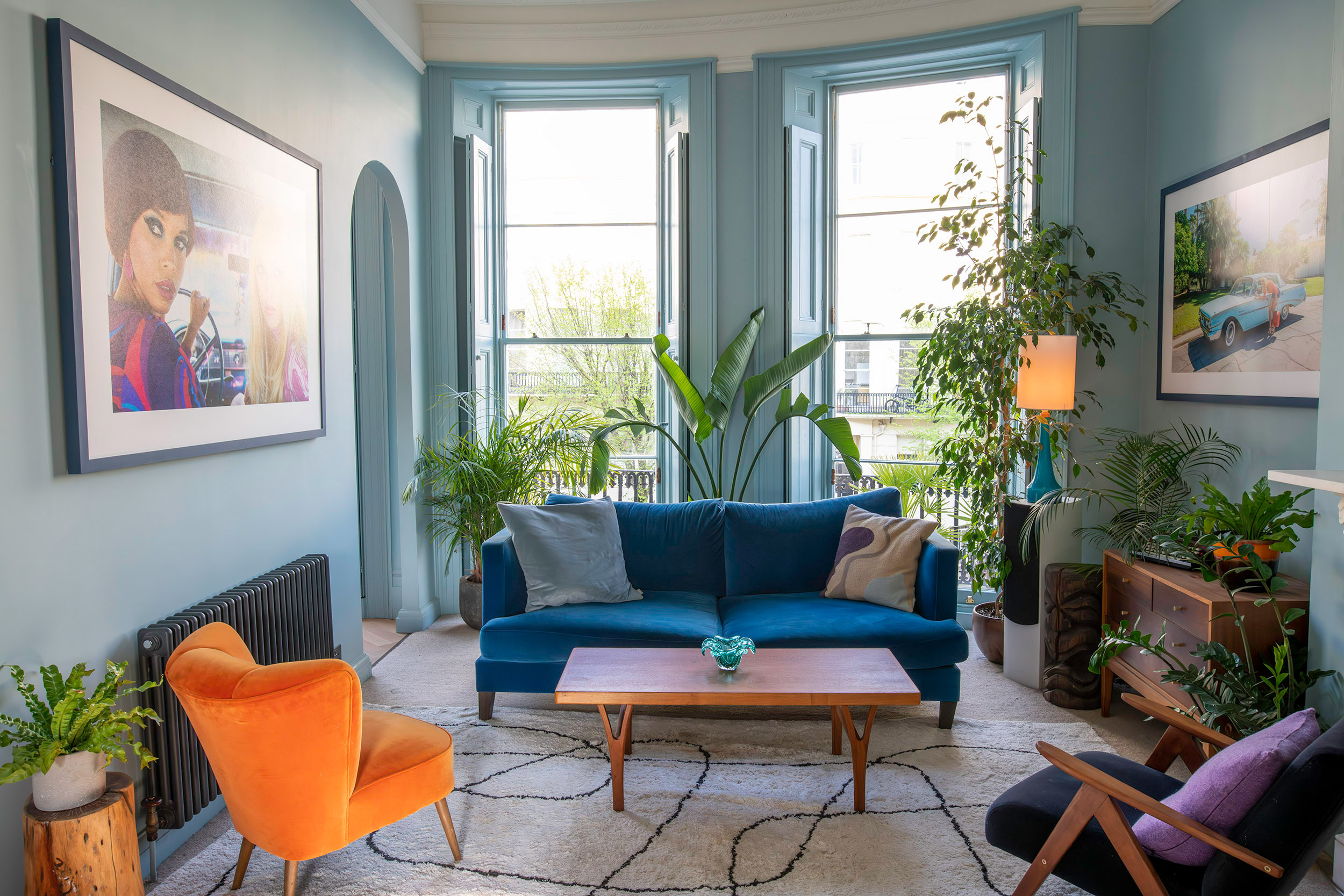
Your home looks like a film set! Is that intentional?
Hahaha. I chose every piece intentionally! But not to make it look like a set, but just a place that the photographic world that I make would be comfortable in. I knew what pictures I would put where, so I chose everything to match the photographs. I envisioned it as being part home, part gallery/installation space. I wanted people to walk into a world that they could understand, having seen my photographs. Anyone who knows me or my work could say yes, this is definitely Matt Henry’s space.
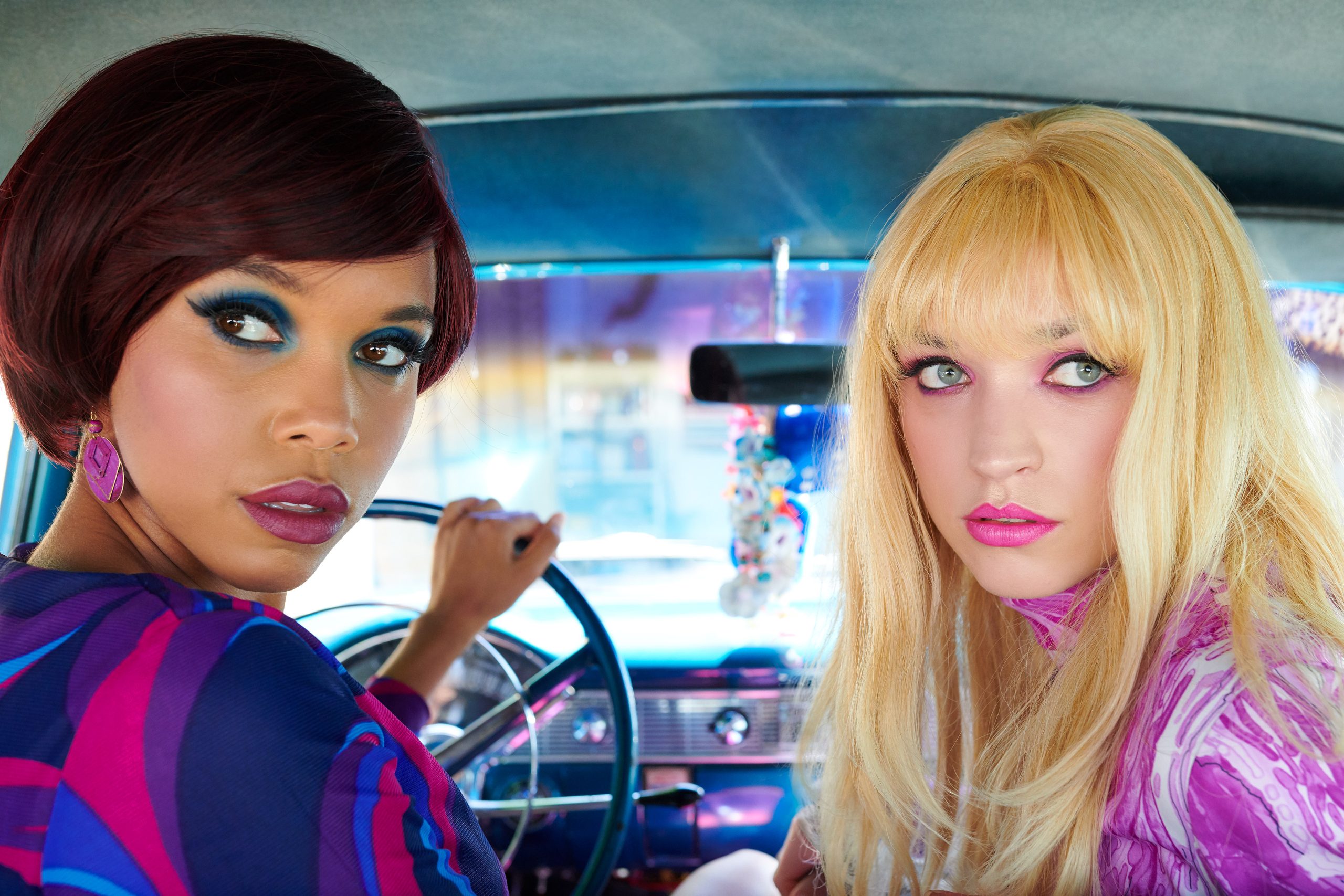 Matt Henry: Myrtle and Velma
Matt Henry: Myrtle and Velma
What are your main aims in taking part in Artists Open Houses?
I think to share my work with the people I live around! Most of my exhibitions are abroad, so I have little to do with those communities apart from attending the opening nights if I can. I think exhibiting locally is really a great thing, as we make art ultimately to communicate and share with other people. If that communication just becomes over Instagram, or the occasional gallery reception, we’re all the poorer for it. It’s lovely to meet people and chat, and see what ideas and thoughts they bring to what they see.
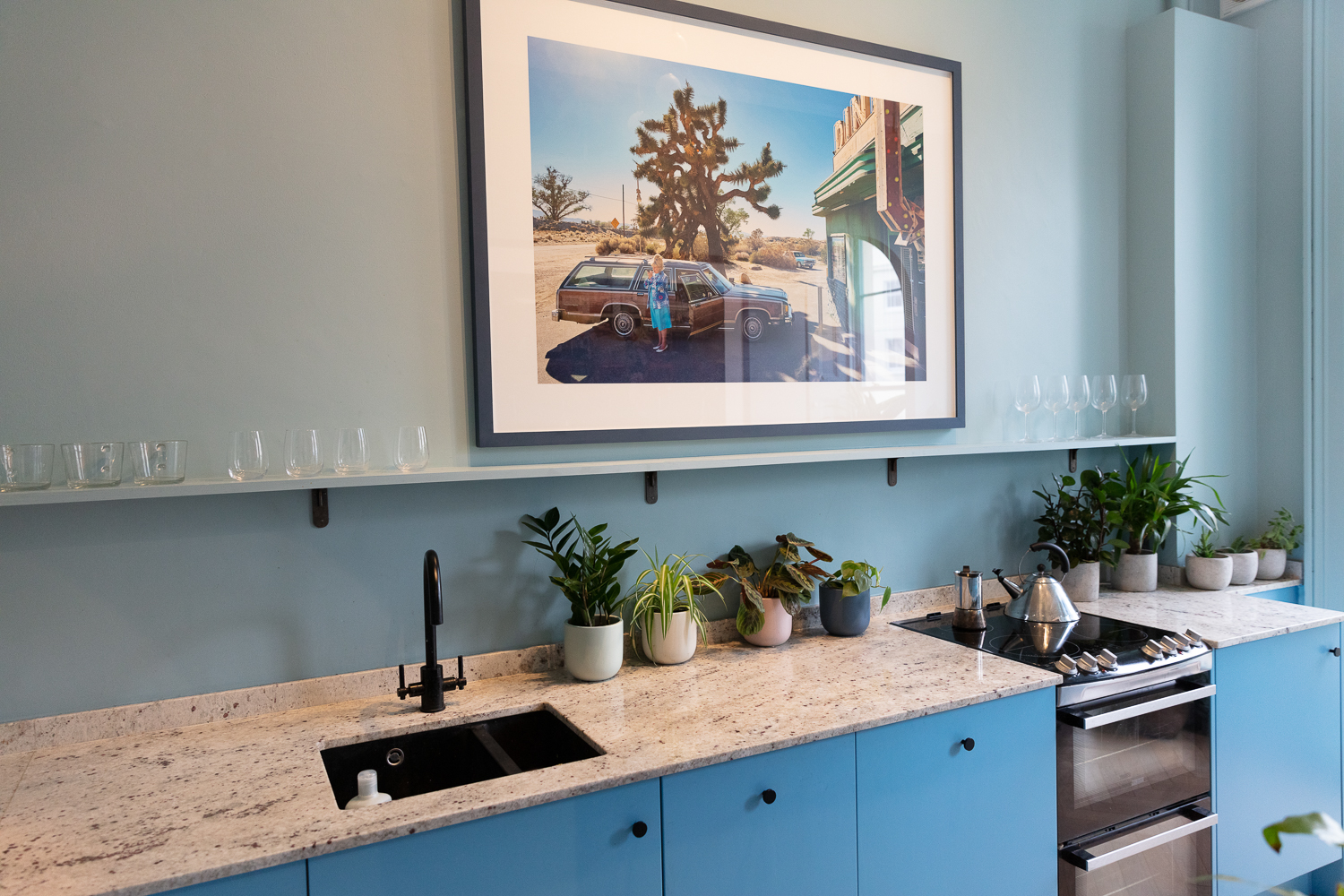
Is there anything else you would like to tell us?
No I think that is it! Please check out my work at www.matthenryphoto.com and catch me on Instagram @matthenryphoto
Visit:
MATT HENRY
At: Flat 2, 37 Brunswick Place, Hove, BN3 1ND
On the Brunswick Town Trail
